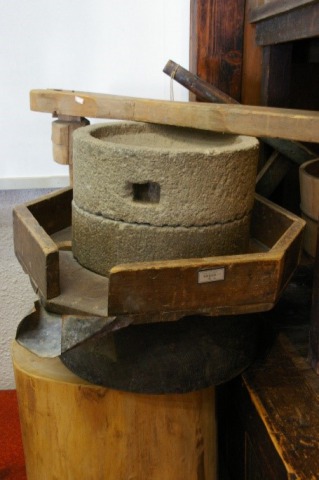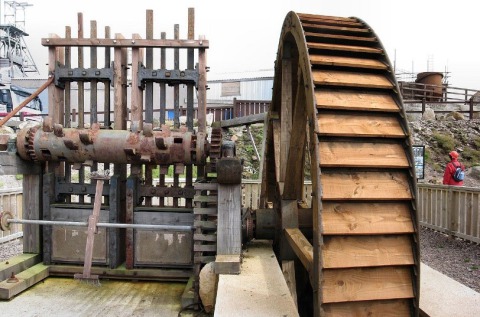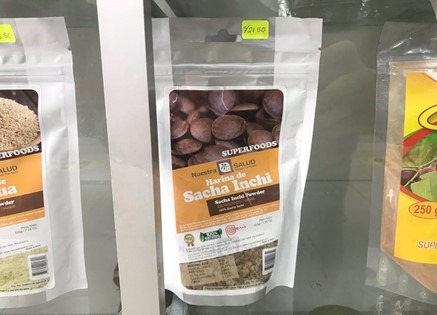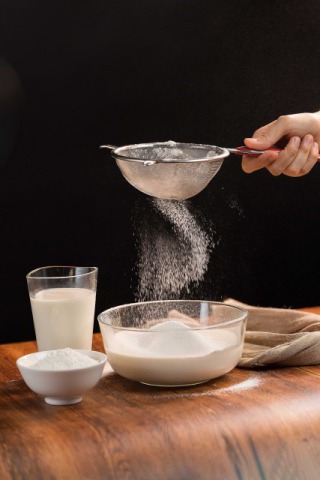- Knowledge Overview
-
The processing of food ingredients using a grinder is an excellent Japanese technique. The deliciousness of food is perceived by the five senses: sight, smell, taste, touch, and hearing. For example, the particle size of flour is an important factor for food products, as the particle shape that gives the grainy texture on the tongue is 20-30㎛ or larger.
By pulverizing food ingredients into a very fine powder using a pulverizing mill, the texture becomes smooth. Furthermore, its solubility in water improves, expanding the range of applications to liquid foods. Utilizing fine powder processing technology can expand the range of processing and can be expected to add high value to food ingredients.
- Background (history and development)
-
Looking at human history from ancient times to the present day, we have seen the development of technology to create new things by crushing things. For example, the use of powders as pigments for cosmetics has a history of about 500,000 to 600,000 years. It is said that during the Stone Age (approximately 10,000 years ago), grains were ground into powder using stones and separated using wind power. The Nihonshoki (Chronicles of Japan) also mentions that lead white cosmetics were used.
In Japanese food culture, powdered foods include udon, soba, tofu, kinako (soybean flour), matcha (powdered green tea), sesame seeds, dango (mochi (rice cake) on a stick). These foods would not exist without stone mills, and udon was once a food for the aristocracy. About 500 years ago (during the Edo period), stone mills became widespread, and soba and udon became the food for ordinary people (Figure 1). However, from the end of the Taisho era (1912-1926) to the beginning of the Showa era (1926-1989), the use of stone mills gradually declined as the use of mechanical pulverization became more widespread and various types of commercial flour became available.
Today, powder manufacturing technology has become even more mechanized and precise, and powders are used in a variety of fields and areas, including food, pharmaceuticals, highly functional materials for IT, and cosmetics. As for materials, a wide variety of materials such as organisms (plants and animals), minerals, metallic materials, chemical products, and inorganic materials are being crushed and their applications are expanding.

Works by the Contributors themselves CC Attribution-Share Alike 3.0 ,Link - How to Apply Knowledge
-
Powders can also be produced from any of the three forms: gaseous, liquid, or solid. This section will explain the pulverization of solids.
Solid pulverization involves coarsely crushing, medium crushing, pulverizing, and finely pulverizing naturally occurring raw materials such as limestone, quartz, and clay, and then classifying them into powders of different sizes (Figure 2). For nuts and grains, the skin and fruit are separated and the fruit is ground into powder. This technique has been practiced since the Stone Age. There are three methods for producing powder from solids: hitting, rolling, and rubbing. Examples of specific names of crushers are as follows:
- Hitting: hammer crusher, stamp mill, hammer mill
- Rolling: roll crusher, edge runner, roller mill
- Rubbing: ball mill, tower mill, bead mill
and others.

Powder Production by Ancient Japanese Water Wheel By Smalljim – Own work, CC BY-SA 3.0 , Link - Examples of Applying Knowledge
-
Milling technology is used with a wide variety of materials. In foods, it is used for grinding grains such as rice, buckwheat, soybeans, wheat, and minor grains; various teas, garlic, ginseng, minerals, mushrooms, and Chinese herbal medicines; and seasonings such as sugar, salt, kelp, and bonito flakes. Furthermore, there are examples of new uses for materials that would otherwise be discarded, such as calcined scallop calcium, scallop shells, shochu residue, vine algae, bamboo chips, rice husks, crab shells, shrimp shells, and dried products of citrus peels by pulverizing and processing them. Various crushing technologies are used in other various fields, including minerals such as lime and feldspar, industrial materials such as platinum, titanium, cement, rock salt, and activated carbon, battery materials such as positive and negative electrode materials, high-performance materials for IT, and industry.
The uses of plant resources in developing countries may be expanded by applying knowledge of crushing technology. The uses of Sacha Inchi okara (Figure 4), which is the residue after extracting oil from Sacha Inchi nuts (Figure 3), which are native to Peru, have been limited. Therefore, when Sacha Inchi okara was dried and finely ground, the texture was greatly improved. Combination with other foods will become easier, and its use is expected to expand. In this case, the material was finely milled using an airflow mill, but the appropriate machine should be selected depending on the particle size and purpose. Sacha Inchi okara has high nutritional value, so the possibility of adding value in various ways, such as commercializing it as a highly functional food, is being considered.

Figure: Sacha Inchi
By The lifted lorax – Own work,CC BY-SA 3.0, Link

Figure: Sacha Inchi Powder in Peru - Positioning and Characteristics of Knowledge in Japan
-
Pulverization technology has become indispensable not only for food production, but also for the production of today’s everyday commodities. Regarding food products, in addition to the grinding of grains, which has been used for a long time, pulverization may expand the range of uses. New products are being created every day by many companies consulting and collaborating with fine grinding processors.
Careful follow-up is a characteristic of Japanese crusher manufacturers. Guidance regarding operation and maintenance continues to be provided to companies that have introduced manufactured equipment. Support system is being prepared to ensure that the companies that want to utilize our knowledge of crushing and pulverization can introduce it with confidence, not only in developed countries but also in developing countries.

Figure: Expansion of applications through fine pulverization - Related URLs (in Japanese)
-
- Japanese food culture created by a stone mills, https://bishogai.com/msand//powder/food/shokubunka.html (Reference: 11/4/2021)
- IMEX Corporation https://www.aimex-apema.co.jp/case/2018/03/19/22 (Reference: 11/4/2021)
- NISHIMURA WORKS co., ltd. and CD Dryer, http://www.cddryer.com/needs/powder.html (Reference: 11/9/2021)
- Forest Business Database Sacha Inchi Oil https://jifpro.or.jp/bfpro/sanpin/sanpin-03/2023/ (Reference: 2/1/2022)
- Other
-
In Japan’s marine resources, scallop and oyster shells have already been pulverized into fine powder and marketed as bioplastics, soil conditioners, and other products.
Your Knowledge could start making a change, when issue is faced; in forest conservation, or in value chains to use forest resources in a sustainable way.


Your Feedback.